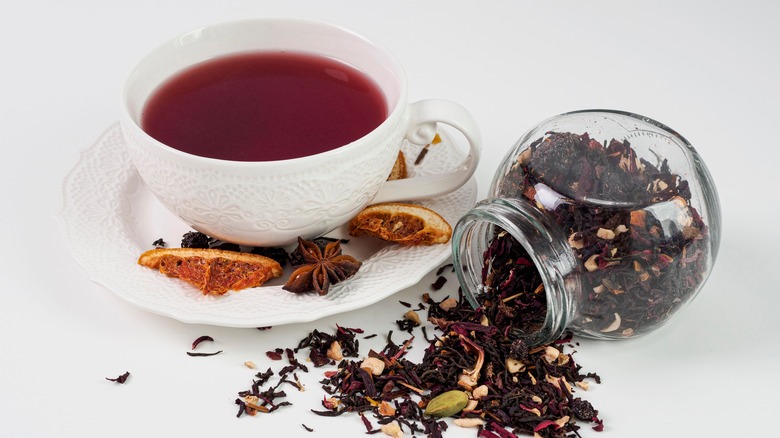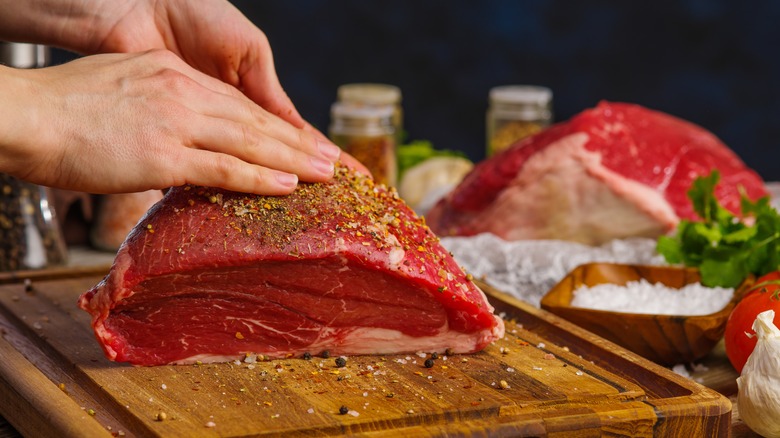Use Loose Leaf Tea To Elevate Smoky Meat Rubs And Marinades
Loose-leaf teas have enormous culinary potential. While some may be familiar with popular matcha-flavored cakes and muffins or chai-infused cookies, this is just the beginning: Tea's potential is so powerful and varied that chef Karl Holl considers the ingredient to be a bona fide "library of flavor" to be used in dishes that go beyond just pastries or dessert. Tea leaves can be used as an ingredient in various dishes — just be careful to take note of steeping times when using tea in cooking.
Loose-leaf teas can infuse unexpected flavor depth into countless savory recipes, for breakfast, lunch, or dinner. This includes an unexpected addition to your next big barbecue event. If you're looking for an elegant and sophisticated way to bring your meat rub or your grilling marinade to the next level, bust out the tea leaves from your cupboards.
To use loose-leaf tea in a meat rub or in a marinade, you simply have to grind up the leaves into a fine texture using a mortar and pestle or food processor. Then you take the rub and cover your prized cut (first slather some oil on so it'll stick) before wrapping it up in plastic wrap and letting the flavors soak in for at least an hour. If you have any leftovers of the rub, you can freeze it in a bag to save for your next grilling day. For marinades, use the tea as you would any other spice.
Tea leaves infuse flavor to meat rubs and marinades
Steak rubs traditionally tend to feature flavor profiles that are heavier and smokier, made up of notes like tobacco, black pepper, and paprika. Since these flavors complement meat so well, it's a good idea to try to find loose leaf teas with similar qualities, such as lapsang souchong. The flavor profile of lapsang souchong also has hints of tobacco, as well as whiskey and campfire smoke. This makes the tea ideal for replicating liquid smoke, but is more subtle (and less artificial tasting). For those who prefer lighter meats like poultry or seafood, green teas can work nicely instead of black tea leaves, since the latter has a stronger flavor.
Another reason to keep a stock of loose-leaf lapsang souchong on hand: its flavor works well paired with fish, too, and can even be used to cure salmon. For tea bag devotees who feel inspired to use tea in savory dishes, not to worry: you can easily use tea bags to infuse flavor into your soups and sauces too.

